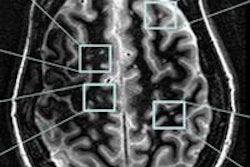Using functional MRI (fMRI), researchers at Georgetown University Medical Center (GUMC) have found that differences in a person's visual system do not cause dyslexia but instead may be a consequence of the disorder, according to a study published online June 6 in Neuron.
The results confirm that differences do exist in the visual system of children with dyslexia; however, the differences are the product of less reading, when compared with typical readers, and are not the cause of the reading struggles, said lead author Guinevere Eden, PhD, director of GUMC's Center for the Study of Learning, in a statement.
The study included young children without dyslexia, who were matched to children with dyslexia based on reading level. The nondyslexics were similar to the dyslexics in terms of brain activity, providing the first indication that the difference in the dyslexics relative to their peers may have more to do with reading ability, Eden said.
Next, the children with dyslexia received a reading intervention and intensive tutoring. As expected, these children made significant gains in reading, and the activity in the visual system increased, suggesting it was mobilized by reading.
"Our study has important implications in understanding the etiology of dyslexia, but it also is relevant to other conditions where cause and consequence are difficult to pull apart because the brain changes in response to experience," concluded Eden.



.fFmgij6Hin.png?auto=compress%2Cformat&fit=crop&h=100&q=70&w=100)




.fFmgij6Hin.png?auto=compress%2Cformat&fit=crop&h=167&q=70&w=250)











